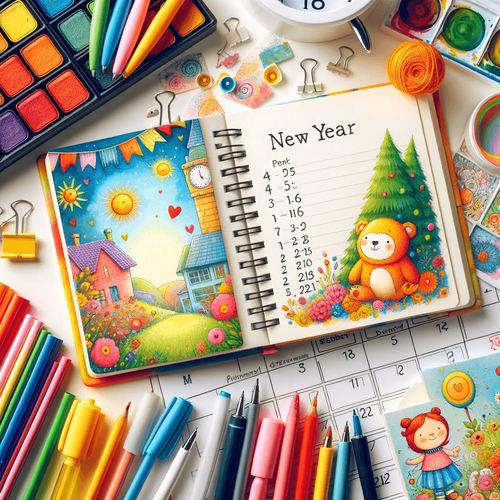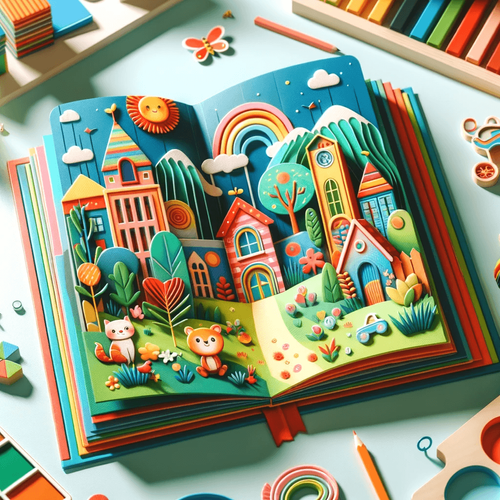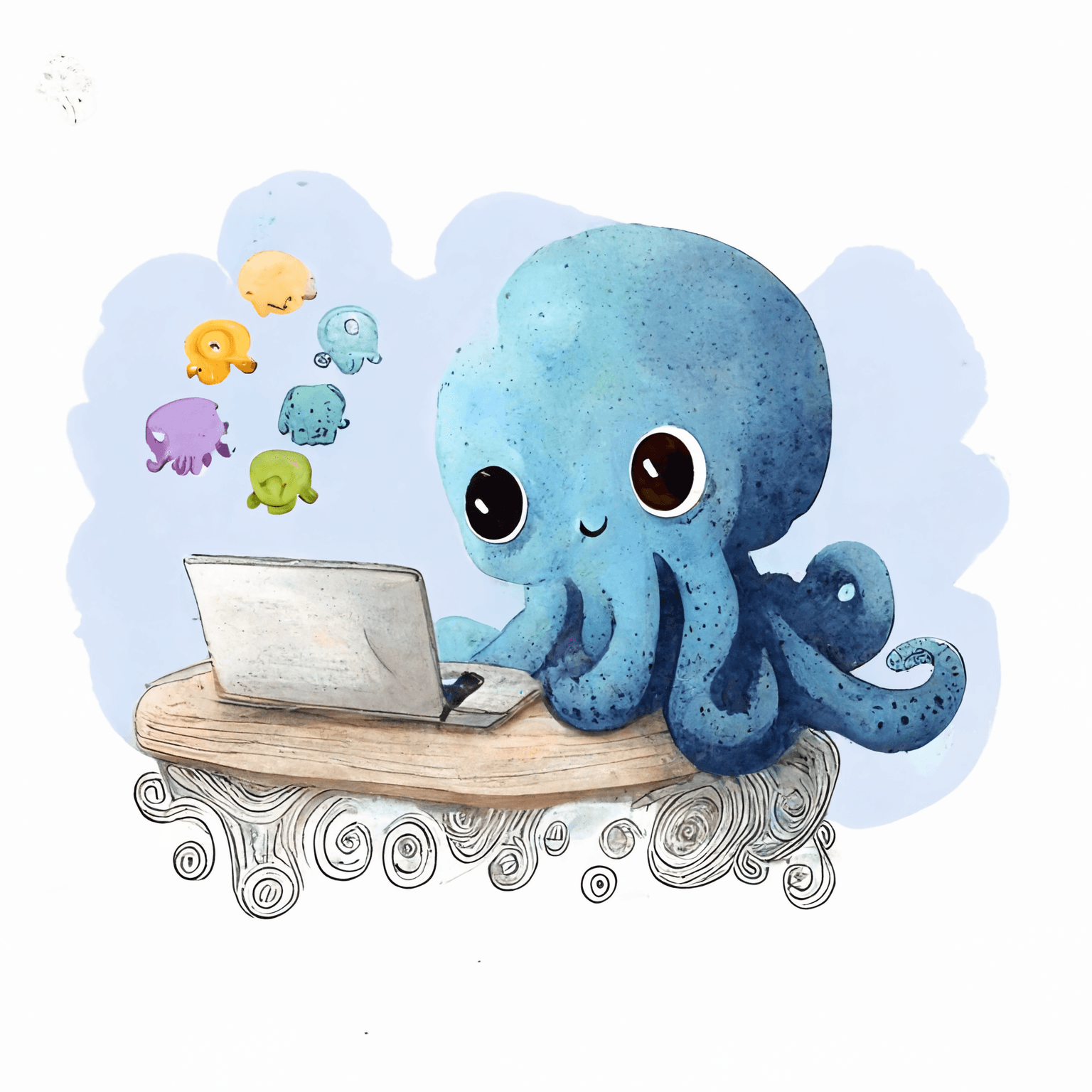Starting Your Journey: Brainstorming Ideas for Children's Books
What Story Do You Want to Tell?
Embarking on the journey of writing a children's book is both thrilling and challenging. The first step is coming up with ideas - or brainstorming. Some writers start with a clear vision of the story they want to tell, others have brains swimming with inspiration and ideas, and some just know they're driven to write, but haven't yet figured out the details just yet.
Ask yourself:
What kind of story do you wish to tell? Who is your target audience? Consider the age range and interests of your potential readers.
This initial phase is crucial for setting the foundation of your children's book manuscript. If you're looking for a tool to help you stay on track while planning your children's picture book, why not check out Made Live? We built Planning into the self-publishing workflow so you can follow your inspiration and start writing sooner.
Developing Your Story: Crafting Compelling Characters and Plot
Building a World Kids Want to Explore
After gathering your ideas, it's time to develop your story. Aspiring authors should focus on creating a solid plot structure and engaging characters. Whether you're aiming to write an educational children's book or an adventurous tale, keeping the story exciting and relatable is key. Think about the themes you want to explore and how they resonate with the age group you're targeting.
Hot Tip:
Learn more about crafting a compelling plot in this article.
The Writing Process: From First Draft to Final Manuscript
Pen to Paper: Bringing Your Story to Life
Now it's time to dive into the writing process. This is where your ideas start to come to life. Whether your story is meant to be read aloud or is filled with rhythmic beats, the way you tell your story matters. Remember, the first draft is just the beginning. Editing is where the magic happens, transforming your story into a polished children's book ready for publishing.
Again, how you go about writing your manuscript is highly personal and changes from author to author. Some recommend starting with a pad of paper and a pen to help you just get your first draft out - and avoid editing it as you go. Others have refined their planning so well that they jump right into the writing software or desktop publisher of their choice.
Bring all of your planning efforts right into your manuscript, and stay on track, when you use Made Live to guide your self-publishing journey. Check out why our software beats your standard desktop publisher here.
Choosing Your Publishing Path: Self-Publishing vs. Traditional
Navigating the World of Children's Book Publishing
Deciding whether to self-publish or go the traditional route is a significant choice, and one you'll need to make before you move forward with illustrations.
- Traditional publishing can provide valuable resources and distribution, but it involves more hurdles to getting your book accepted, requires you to relinquish much of your creative control, and results in significantly lower royalties.
- Self-publishing offers complete creative control, quicker path to publication, and higher royalties, but it also means taking on all the responsibilities, from formatting your book for children to marketing. This is where Made Live comes in 😉.
- Hybrid publishers can help you self-publish by helping where you need it, but costs can add up quickly and user reviews are mixed.
Author Beware:
Vanity publishers are should be avoided at all costs, according to most reputable self-publishing organizations and advocates, and are considered predatory. They will publish literally anything - as long as you're willing to pay.
Want to Read More?
The Importance of Illustrations in Children's Books
Bringing Your Story to Visual Life
Illustrations are the heart of children's books, bringing stories to visual life. High-quality, engaging illustrations are crucial for capturing young readers' attention. While it's tempting to cut costs, investing in professional illustrations can significantly impact your book's appeal and success.
These days, authors are faced with a wide range of illustration options ranging from budget-saving DIY-illustrations all the way through to investing in and hiring a professional children's book illustrator or artist. Click here for a brief summary of your illustration options, along with tips and warnings to keep on your radar.
Questions about using Artificial Intelligence (AI) or Generative-AI to help you illustrate your children's book? Check out this article.
Final Steps: Typesetting, Formatting, and Publishing
Preparing Your Book for the World
After your manuscript and illustrations are ready, you'll need to focus on typesetting and formatting. This stage is all about making your book visually appealing and reader-friendly. It's where you consider everything from font choices to page orientation and layout, and is often the stage where an author discovers the (sometimes costly) mistakes they've made.
We often recommend that authors "start with the end in mind" - and this is exactly why. While it might seem like you're jumping too far ahead by considering what your book will look like before you write your manuscript, this is exactly when you should start considering this level of detail. I cannot even tell you how many times I've heard about authors writing their manuscript and paying for beautiful illustrations - only to learn that the illustrations don't match their trim size, or even worse, that the trim size they chose is not supported by their print-on-demand service or distributor.
Hot Tip:
Start with the end in mind! With Made Live, you select your ideal trim size early on in your self-publishing journey, ensuring it aligns with your book distribution plan, saving you from making costly mistakes.
Marketing Your Children's Book: Strategies for Success
Spreading the Word
With your book published, it might be tempting to think you get to sit back and relax. But alas - it's time to shift focus to marketing. Effective promotion is key to reaching your audience. Utilize social media, word-of-mouth campaigns, and other marketing strategies to highlight your new children's book. Understanding your target market and adjusting your tactics accordingly is essential for success.
Self-publishing best practices suggest you start thinking about your marketing plan long before your book hits the market, and for good reason. It's never too early to start with the simple things like building your social media presence or starting your author website. At Made Live, we're working hard on developing the post-publishing and marketing tools and resources children's book authors need to bolster sales and expand their reach. Scroll down to the bottom of this page and sign up for our newsletter and stay tuned for updates and newly released features.
Additional Resources
Looking for a comprehensive guide filled with great information about publishing children's books? Look no further - How to Self-Publish a Children's Book: A Complete Guide.
Get Started with Made Live Today
To get started with Made Live, simply visit our website and click the button at the top of your screen to sign up for a free trial. Our user-friendly software and helpful support team will guide you through the process of writing, illustrating, and self-publishing your children's picture book.
Don't let the cost or complexity of traditional publishing hold you back from achieving your dream of becoming a children's book author. With Made Live, you can bring your vision to life and share your story with the world.
Questions? Concerns? Looking for a cheeky promo code? Send me an email.




